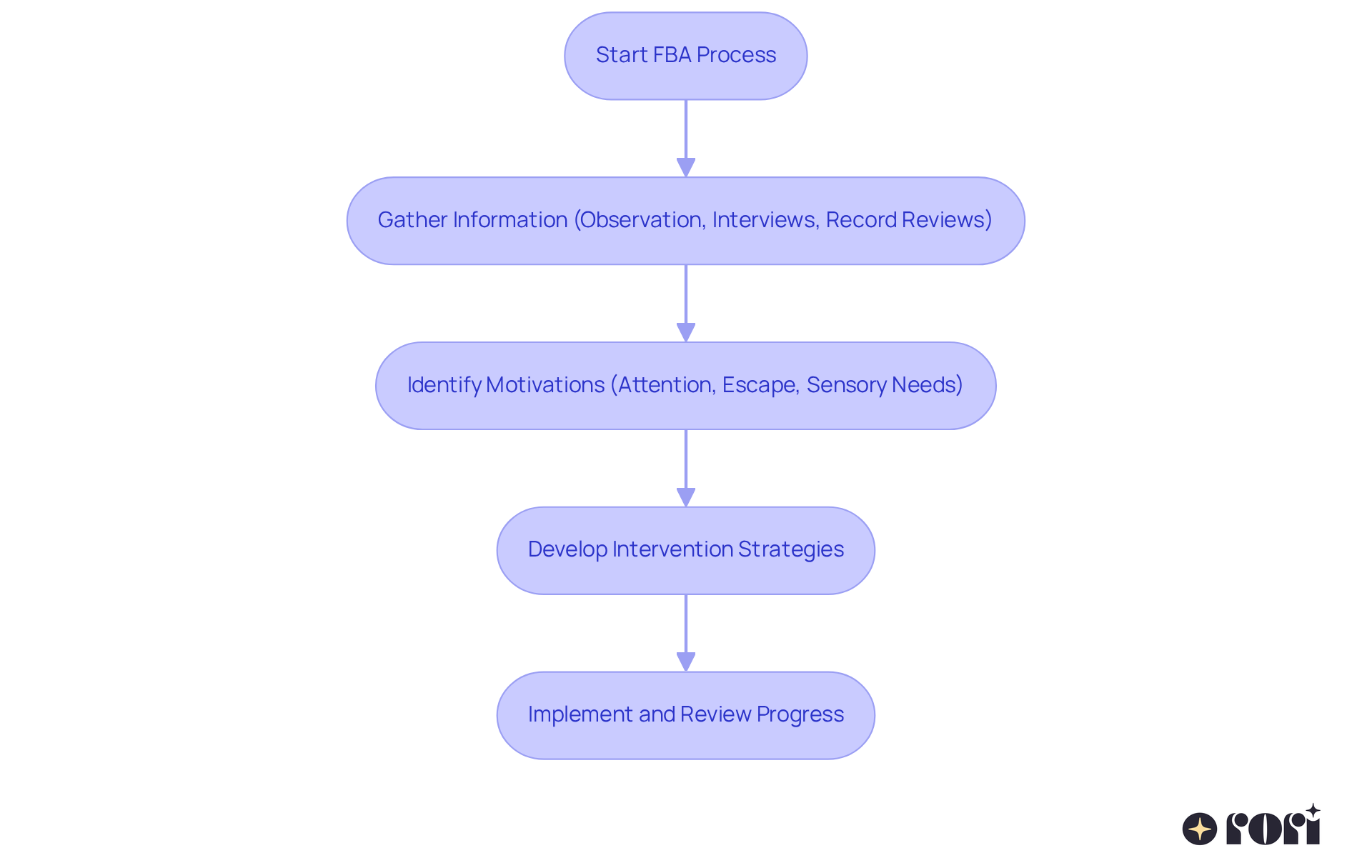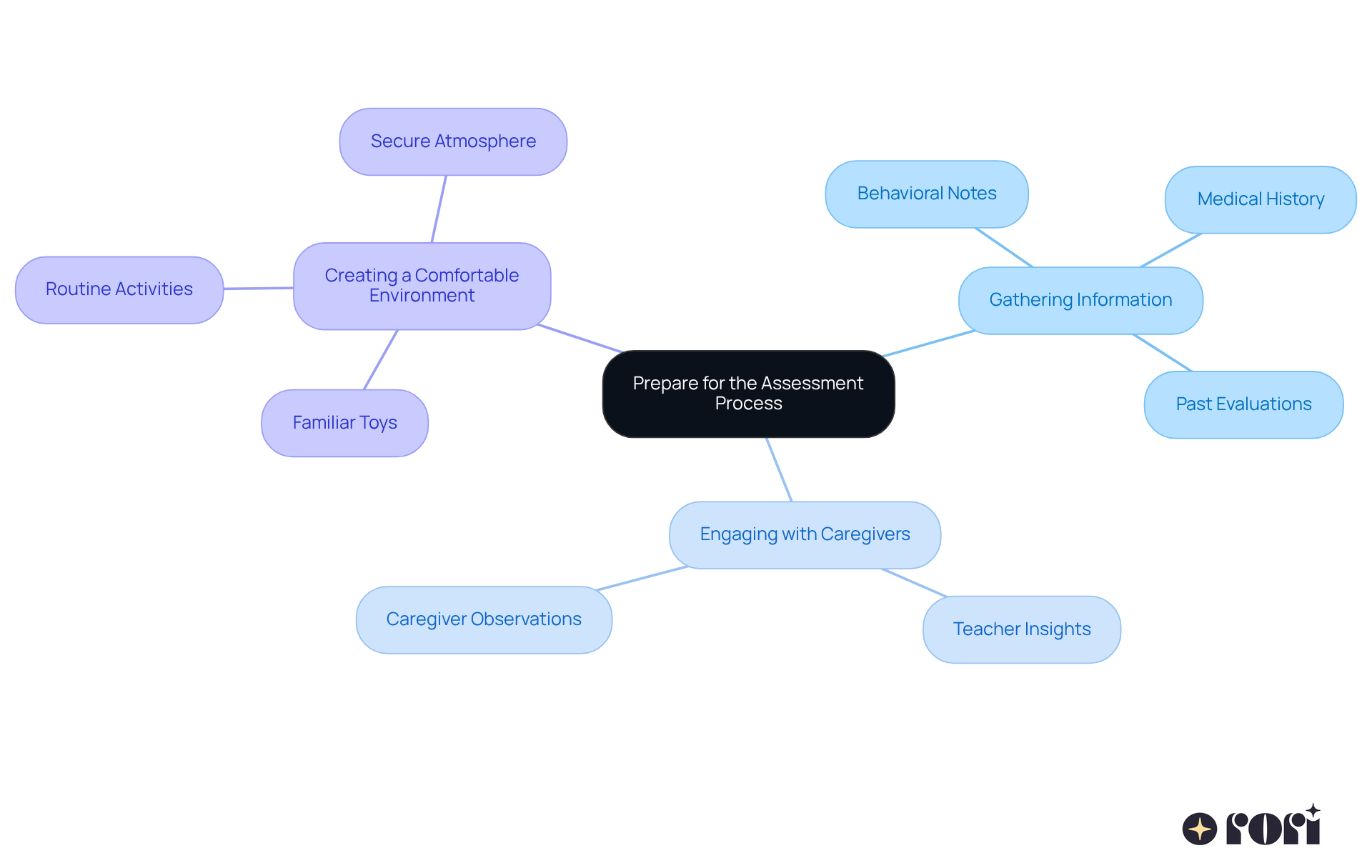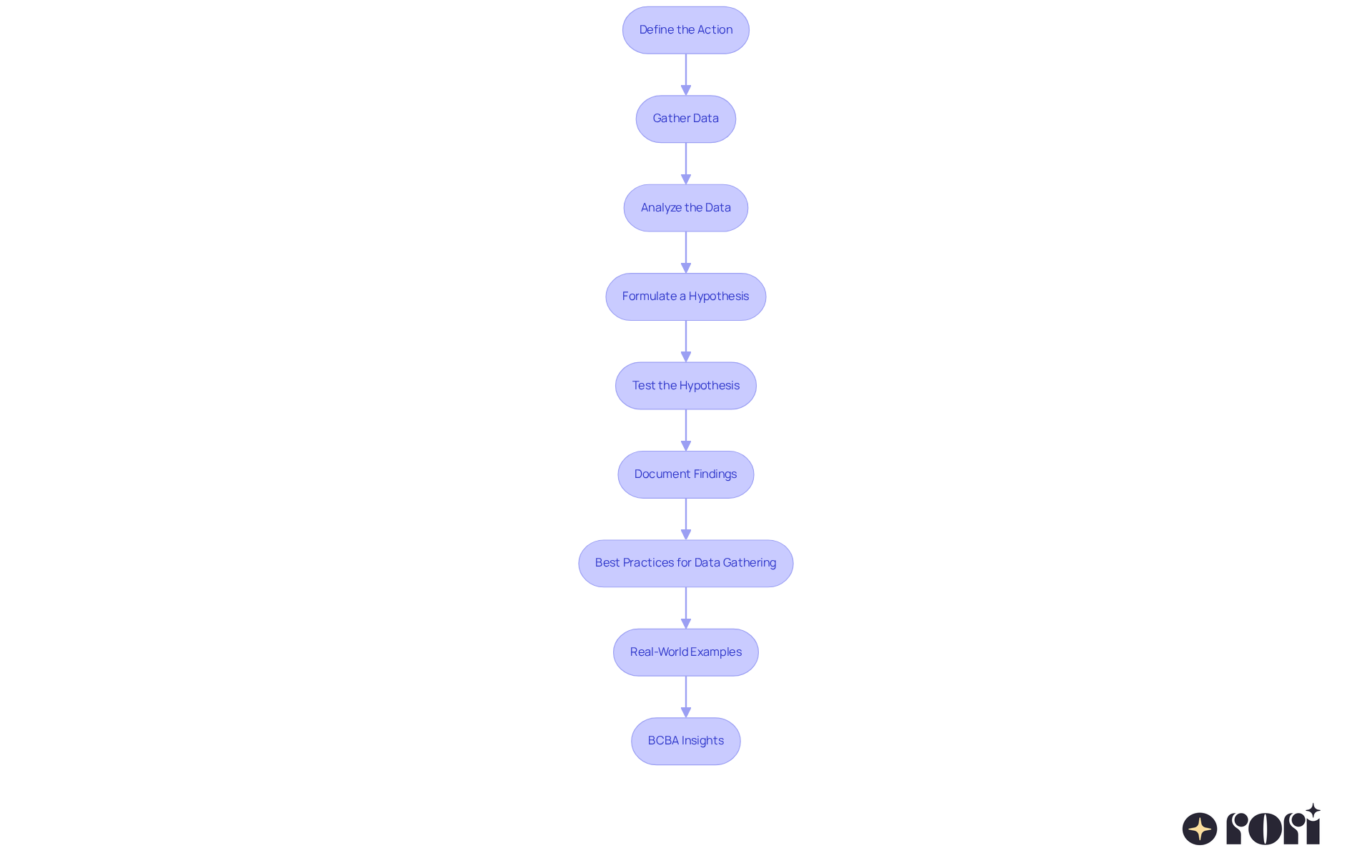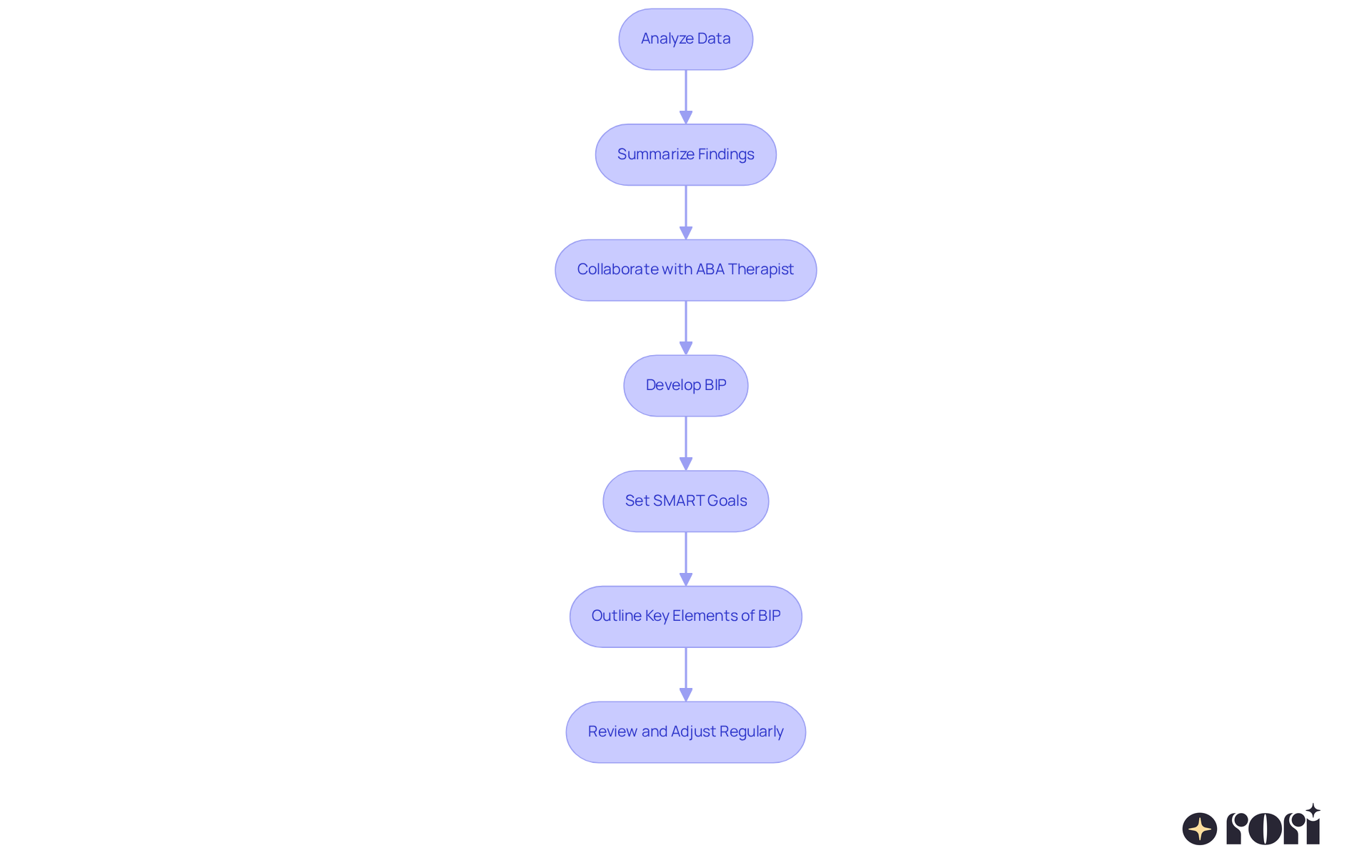This article highlights four essential steps for conducting effective assessments in Applied Behavior Analysis (ABA) for children. We’ll focus on:
Each step underscores the importance of systematic data collection and analysis, helping to create tailored strategies that meet the unique needs of every child. Ultimately, this approach enhances the effectiveness of ABA therapy.
Let’s explore this together! By understanding behavior, we can get a clearer picture of what’s happening and why. Preparing for assessments is crucial, as it sets the stage for success. When we conduct assessments, we gather vital information that informs our next steps. Finally, developing intervention plans allows us to put everything into action, ensuring that therapy is as effective as possible for each child.
Remember, you’re not alone in this journey. We’re here to help you every step of the way! Your involvement and understanding are key to making a positive impact on your child’s development.
Understanding a child’s behavior can often feel like navigating a complex maze, especially when it comes to autism. For many parents, this journey can be overwhelming. That’s where Functional Behavior Assessment (FBA) comes in! It’s a crucial tool for caregivers, offering insights into the motivations behind challenging behaviors and paving the way for tailored interventions.
In this guide, we’ll explore the essential steps of conducting an effective ABA assessment. We want to equip you with the knowledge to foster positive behavioral change in your child. But let’s pause for a moment—how can we ensure that the assessment process not only identifies the root causes of behaviors but also leads to actionable strategies that truly support your child’s unique needs? Let’s explore this together!
Functional Behavior Assessment (FBA) is a systematic approach that helps us uncover the root causes of challenging behaviors in children with autism. By gathering information through direct observation, interviews, and record reviews, we can better understand the context of these actions. The main goal of an FBA is to figure out what the behavior is trying to achieve—whether it’s seeking attention, escaping a situation, or satisfying a sensory need.
When we understand these motivations, caregivers and clinicians can create effective intervention strategies that are tailored to each child’s unique needs. At Rori Care, our behavior care engine enhances this process by conducting functional behavior analysis and generating automatic progress reports for clinicians to review. This empowers caregivers with ABA principles and strategies, allowing them to actively support their child’s behavioral goals through informed data collection.
Getting to know the FBA process is the first step in ensuring that your child’s ABA therapy is effective and personalized. Let’s explore this together! We’re here to help you every step of the way!

To effectively prepare for the assessment ABA process, parents can start by gathering important information about their child's behavior, medical history, and any past evaluations. It’s helpful to create a detailed list of specific behaviors to address, including notes on when and where these behaviors happen. Engaging with teachers or caregivers who interact with your child regularly can offer valuable insights—they might notice patterns or challenges that you may not see at home.
Creating a comfortable environment for the assessment is key. Make sure your child feels secure and relaxed by including familiar toys or routines that can help ease any anxiety they might feel during the process. This supportive atmosphere can really enhance the effectiveness of the assessment ABA, allowing for a clearer understanding of your child's needs. Let’s explore this together and ensure your child gets the best support possible!

Define the Action: Let’s start by clearly identifying the specific behavior you want to evaluate in the assessment aba. Using observable and measurable terms helps ensure it aligns with the individualized planning that’s so essential for effective ABA therapy.
Gather Data: Next, it’s time to collect some information! You can do this through direct observation, interviews, and questionnaires. Be sure to note when and where the behavior occurs, along with any preceding events or outcomes. Gathering this information is key to setting quantifiable objectives and understanding the context of the actions.
Analyze the Data: Now, let’s look for patterns in the data you collected. Identify the triggers and contexts where the actions happen most frequently. This assessment aba will assist you in creating evidence-based strategies tailored to your child's unique needs.
Formulate a Hypothesis: Based on your analysis, it’s time to develop a hypothesis about the purpose of the action. Does it seem to gain attention, help escape a situation, or fulfill a sensory need? This step is vital for aligning your strategies with the principles of assessment aba.
Test the Hypothesis: Now comes the fun part—implementing strategies to test your hypothesis! This might involve adjusting the environment or changing your reactions to see if it impacts the frequency or intensity of the actions. Involving a qualified analyst can provide valuable expertise during this phase.
Document Findings: Don’t forget to keep thorough records of your observations and any changes in behavior. This documentation will be essential for developing an intervention plan that utilizes assessment aba to empower you as caregivers and supports effective behavioral change.
Best Practices for Data Gathering: Consider using a mix of techniques for data collection. Continuous recording for frequency and duration, along with interval recording to capture actions over specific time frames, enhances the reliability of your findings.
Real-World Examples: For example, a BCBA might observe a young person during playtime to assess social interactions, noting instances of sharing or conflict. This direct observation, combined with parent interviews regarding the child's behavior at home, contributes to a comprehensive assessment aba of the child's social skills.
BCBA Insights: According to seasoned BCBAs, specifying actions in clear, measurable terms is crucial. As one expert pointed out, 'When we can measure actions using assessment aba, we can better comprehend its purpose and create effective interventions.' This perspective highlights the importance of accuracy in assessing behavior.
Let’s explore this together! We’re here to help you every step of the way!

Once you’ve gathered and analyzed the data, the next step is to create a tailored intervention plan. Start by summarizing your findings, highlighting the actions you've identified, their functions, and any patterns that stood out. It’s a great idea to collaborate closely with your child's ABA therapist or clinician to develop a comprehensive Behavior Intervention Plan (BIP). This plan should outline specific, measurable, achievable, relevant, and time-bound (SMART) goals, strategies, and supports that are customized to your child's unique needs.
Key elements of the BIP should include:
Using Rori Care's care engine can really enhance this process—it conducts functional analysis and produces automatic progress reports for clinician review. Plus, conducting an assessment aba is essential as it lays the groundwork for an effective BIP.
Remember to keep the BIP focused on a maximum of four or five behaviors at a time. This way, you can maintain attention where it’s needed most. This collaborative approach not only empowers you as a caregiver but also ensures that the intervention aligns with your child's strengths and challenges. Regularly reviewing and adjusting the plan based on ongoing observations and data collection is crucial for achieving meaningful behavioral improvements. Let’s explore this together, and remember, we’re here to help you every step of the way!

Understanding and implementing an effective assessment process in Applied Behavior Analysis (ABA) is so important for supporting children with autism. By using a Functional Behavior Assessment (FBA), caregivers can discover the underlying motivations behind challenging behaviors. This insight allows for tailored intervention strategies that meet each child's unique needs. This personalized approach not only boosts the effectiveness of ABA therapy but also empowers caregivers to actively engage in their child's behavioral development.
In this article, we've outlined key steps for conducting a successful assessment. These steps include:
Each of these stages plays a critical role in understanding the child's behavior and ensuring that interventions are both effective and measurable. The collaborative effort between caregivers and ABA professionals is vital for achieving meaningful outcomes.
Ultimately, the importance of a well-executed assessment process cannot be overstated. It lays the groundwork for effective interventions that can lead to significant improvements in a child's behavior and overall well-being. By committing to these steps, caregivers can create a supportive environment that not only meets their child's needs but also encourages growth and development. Embracing this structured approach to assessment in ABA is a wonderful way to advocate for a child's success and happiness in their daily lives. Let’s explore this together!
What is Functional Behavior Assessment (FBA)?
Functional Behavior Assessment (FBA) is a systematic approach used to uncover the root causes of challenging behaviors in children with autism by gathering information through direct observation, interviews, and record reviews.
What is the main goal of an FBA?
The main goal of an FBA is to determine what the behavior is trying to achieve, such as seeking attention, escaping a situation, or satisfying a sensory need.
How can understanding the motivations behind behaviors help?
Understanding these motivations allows caregivers and clinicians to create effective intervention strategies tailored to each child's unique needs.
How does Rori Care enhance the FBA process?
Rori Care enhances the FBA process by conducting functional behavior analysis and generating automatic progress reports for clinicians, empowering caregivers with ABA principles and strategies.
Why is it important to know the FBA process for ABA therapy?
Knowing the FBA process is crucial for ensuring that a child’s ABA therapy is effective and personalized, helping caregivers actively support their child’s behavioral goals through informed data collection.